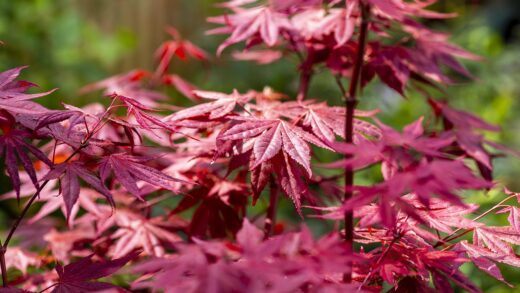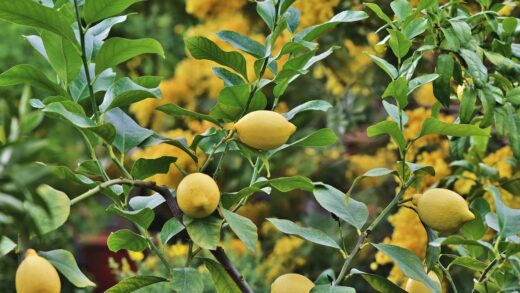Successfully overwintering French lavender is a critical aspect of its cultivation, particularly for gardeners living outside of its native warm climate. Unlike the more cold-tolerant English lavender (Lavandula angustifolia), French lavender is a tender perennial, typically hardy only in USDA zones 8 through 10. In regions that experience freezing temperatures and harsh winter conditions, leaving this plant unprotected outdoors will almost certainly result in its demise. Therefore, understanding its limitations and implementing an appropriate winter protection strategy is essential for ensuring its survival from one year to the next.
The primary challenge in overwintering French lavender is protecting it from a combination of cold temperatures and wet, frozen soil. The plant is particularly vulnerable to root rot during the winter months when damp, cold soil prevents any moisture from evaporating. This is often a greater threat than the cold air temperature itself. For this reason, excellent drainage is paramount, not just for summer health, but for winter survival. Any winter protection plan must address both the cold and the moisture to be successful.
For gardeners in colder climates (zones 7 and below), the most reliable method for overwintering French lavender is to grow it in a container. This allows the plant to be easily moved to a sheltered location, such as an unheated garage, a cold greenhouse, or a protected porch, for the duration of the winter. In this dormant state, the plant’s needs are minimal, requiring only occasional, light watering to prevent the roots from completely drying out. This method provides the best chance of seeing your lavender thrive again in the spring.
Even for gardeners in borderline hardy zones (zone 7b or 8a), providing some form of winter protection for in-ground plants can significantly increase their chances of survival. This might involve applying a protective layer of mulch after the ground freezes or using a frost blanket during particularly cold snaps. The goal is to insulate the root system from the most extreme temperature fluctuations and to shield the foliage from damaging, desiccating winter winds. Proper preparation in the autumn is the key to a successful wintering process.
Assessing cold hardiness and regional limitations
The first step in developing a wintering strategy for French lavender is to accurately assess its cold hardiness in the context of your specific climate. French lavender is generally rated for a minimum winter temperature of around -12°C to -9°C (10°F to 15°F), which corresponds to USDA hardiness zone 8a. It is crucial to know your specific hardiness zone to determine if your plant can even potentially survive the winter outdoors. If you live in zone 7 or colder, outdoor survival is highly unlikely without extraordinary protection, and container growing is the recommended path.
Beyond the simple hardiness zone rating, you must also consider the unique microclimates within your own garden. A plant in a sheltered, south-facing location next to a brick wall will experience a much warmer winter environment than one planted in an open, exposed area subject to sweeping winds. The presence of a snow cover can also be a significant factor; a reliable blanket of snow provides excellent insulation for the plant’s roots and crown. Conversely, a cold, dry winter with no snow cover can be particularly damaging.
It is also important to recognize that the health of the plant going into winter plays a huge role in its ability to survive. A strong, healthy plant with a well-established root system that has not been over-fertilized is much better equipped to handle cold stress than a weak or newly planted specimen. The soft, lush growth promoted by excessive nitrogen fertilizer is especially vulnerable to frost damage. Therefore, proper care throughout the growing season is an integral part of winter preparation.
Ultimately, you must be realistic about the limitations of this species in your region. While it may be tempting to try to push the boundaries, attempting to grow French lavender in-ground in a climate that is simply too cold will often lead to disappointment. Acknowledging these limitations from the outset and choosing the appropriate growing method—either as a container plant or a tender perennial treated as an annual—will save you time and effort and lead to a more successful gardening experience.
Preparing outdoor plants for winter
For those gardening in a borderline climate (such as zone 8) where French lavender has a chance of surviving outdoors, proper autumn preparation is key. The process should begin in the late summer by ceasing all fertilization. This signals to the plant to stop producing new, tender growth and to begin the process of hardening off its existing stems and foliage in preparation for the colder temperatures to come.
As autumn progresses, you should also reduce supplemental watering, allowing the soil to become drier. The goal is to avoid having the plant enter the winter with waterlogged soil around its roots. Wet soil combined with freezing temperatures is a fatal combination for French lavender. Ensure that the area around the plant is free from fallen leaves and other debris that can trap moisture against the plant’s crown and promote rot during the damp winter months.
A light pruning in early autumn can be beneficial. This involves trimming off the spent flower stalks and lightly shaping the plant into a compact mound. This helps to prevent the branches from being whipped around by winter winds or weighed down and damaged by snow. It is critical, however, that this is only a light trim; a hard pruning should be avoided in the fall as it can stimulate new growth that will be killed by the first frost.
After the first hard frost has occurred and the ground has begun to freeze, you can apply a layer of protective winter mulch. Unlike garden mulch used to retain moisture, this mulch is intended for insulation. Use a light, airy material such as straw, pine boughs, or shredded leaves. Apply a thick layer around the base of the plant, but avoid piling it directly against the stems to maintain some air circulation at the crown. This mulch will help to insulate the roots from the freeze-thaw cycles that can heave plants out of the ground.
Overwintering french lavender in containers
For most gardeners in temperate climates, growing French lavender in a container is the most practical and successful approach to overwintering. This method gives you complete control over the plant’s winter environment. The process of moving the plant indoors should be initiated in the autumn before the first hard frost is expected. A sudden move from warm outdoor conditions to a much colder indoor space can shock the plant, so a gradual transition is ideal if possible.
The ideal location for overwintering a containerized French lavender is a spot that is cool, has good air circulation, and receives some bright, indirect light. An unheated garage or shed with a window, an enclosed but unheated porch, or a cool basement are all excellent options. The goal is not for the plant to actively grow, but to go into a state of dormancy. A location that is too warm and dark will encourage weak, spindly growth that will not be viable.
Watering during the dormant period should be drastically reduced. The plant’s metabolic processes slow down significantly in the cool temperatures, and its need for water is minimal. Check the soil every three to four weeks, and provide just enough water to keep the soil from becoming completely bone dry. A small amount of water once a month is often sufficient. Overwatering a dormant plant in a cool environment is a sure way to cause root rot.
Before moving the plant into its winter quarters, it is a good idea to inspect it for any pests that may be hitching a ride indoors. Check the leaves and stems for aphids, spider mites, or other common indoor plant pests. Giving the plant a gentle spray with water or treating it with insecticidal soap before bringing it inside can prevent a small pest issue from becoming a major infestation in the enclosed indoor environment over the winter months.
Post-winter care and revival
As spring approaches and the danger of hard frost has passed, it is time to begin the process of waking up your overwintered French lavender. For container plants, this involves gradually reintroducing them to the outdoor environment. Start by placing the pot in a sheltered, shady spot for a few hours each day, and slowly increase its exposure to sunlight and outdoor conditions over the course of a week or two. This hardening-off process prevents the tender, new growth from getting scorched by the sun or damaged by the wind.
For both container and in-ground plants, spring is the time to perform a thorough clean-up and pruning. Wait until you see small, new green buds beginning to emerge from the base or along the lower stems. This will show you exactly where the living tissue is. At this point, you can confidently prune off all the dead or damaged parts of the plant, cutting back any dead stems to just above a new bud. Do not be afraid to prune it back hard if there has been significant winter dieback; this will rejuvenate the plant.
After this initial pruning, you can resume a more regular watering schedule as the plant begins its active growth phase. For container plants, this is also a good time to repot if the plant is root-bound or to refresh the top few inches of soil with a new potting mix. You can also give the plant its first light feeding of the season with a balanced, slow-release fertilizer or a diluted liquid feed to support the development of new, healthy growth.
Be patient with the plant’s recovery. It may take several weeks for an overwintered French lavender to fully leaf out and begin to look lush and vigorous again. The initial post-winter appearance can be a bit stark, especially after a hard pruning, but this spring maintenance is vital for the long-term health and shape of the plant. With this proper care, your lavender will be well-prepared to produce a spectacular display of fragrant blooms throughout the summer.




















